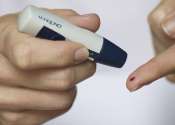Advanced optical imaging technique may lead to structure-guided drug design
A Clemson University College of Science researcher, together with a team of researchers primarily at Heinrich Heine University in Germany, developed and demonstrated new optical imaging methods to monitor a single molecule ...









